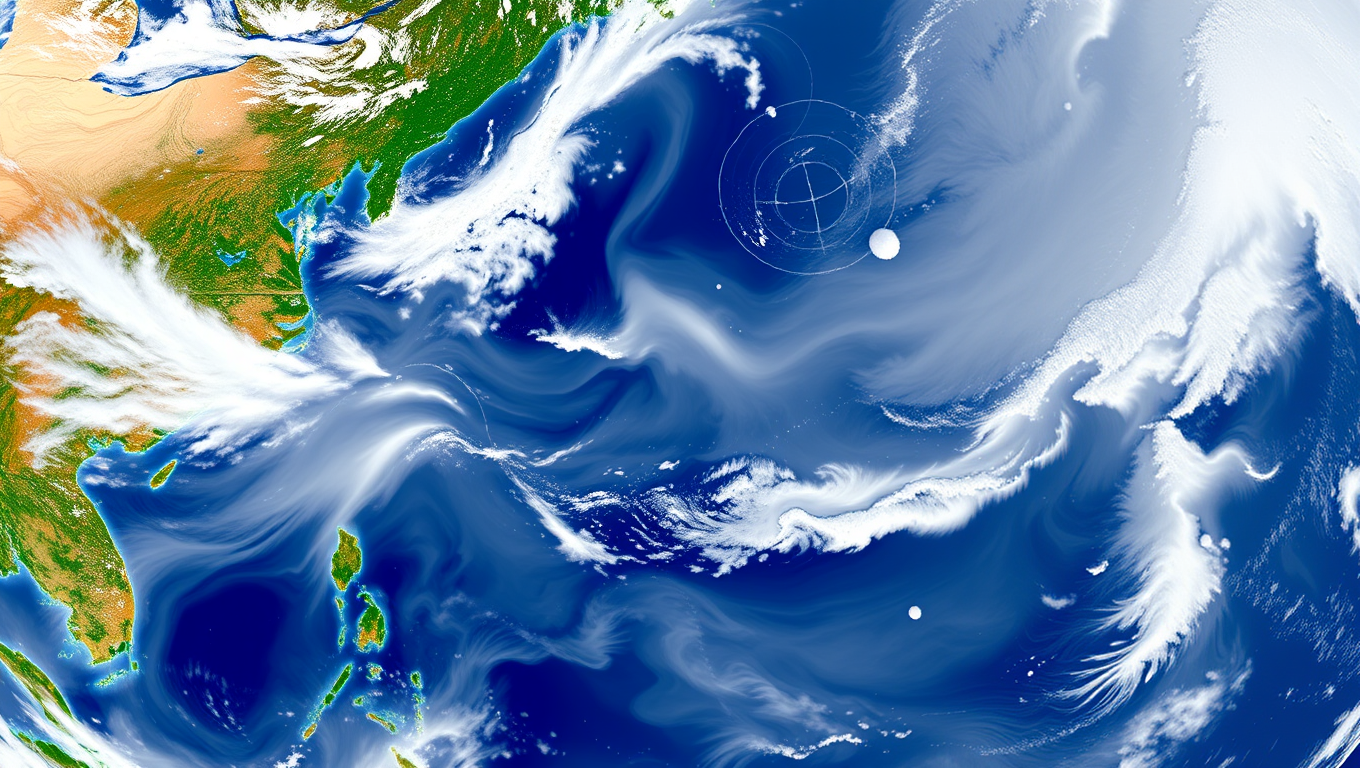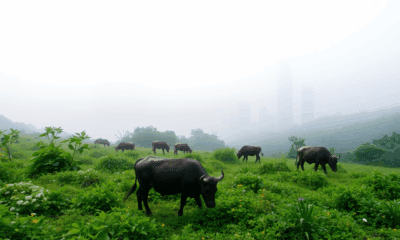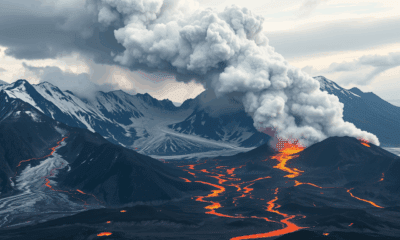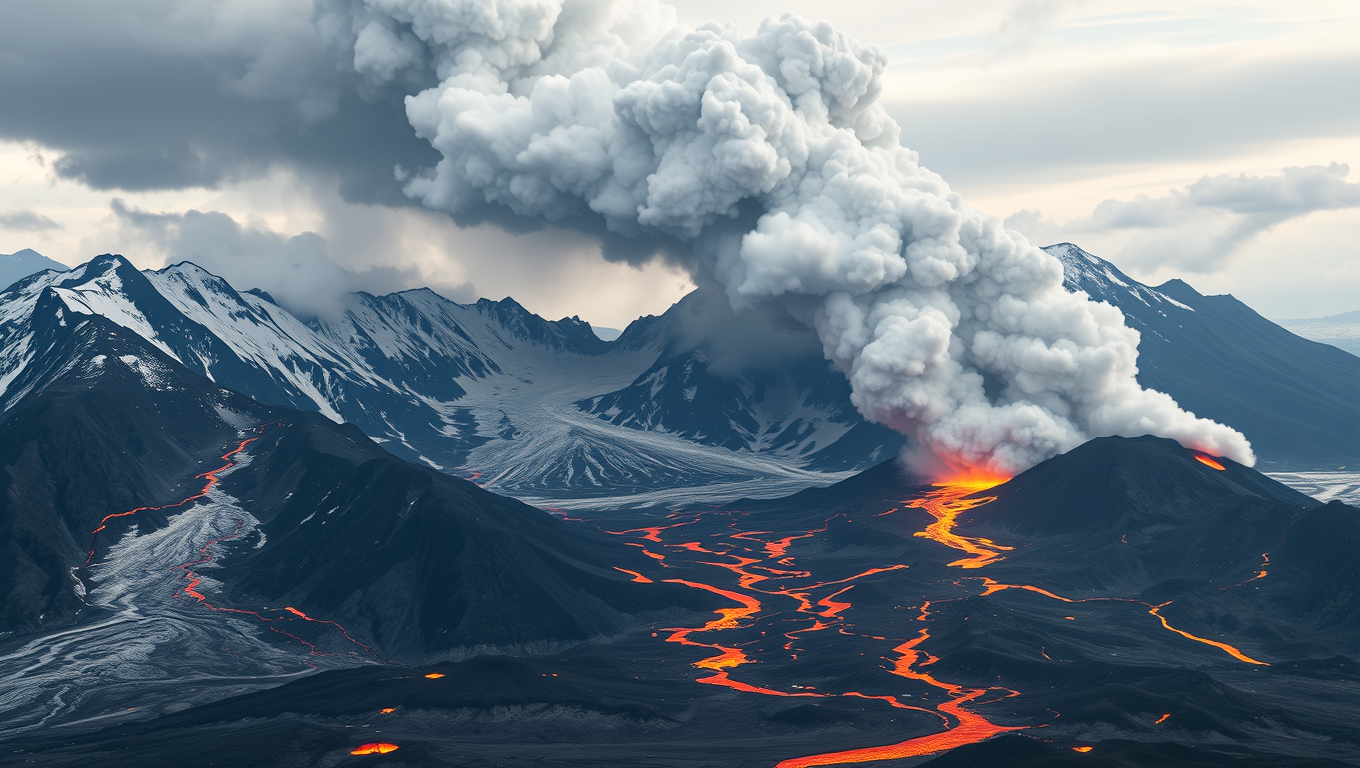While we try to keep things accurate, this content is part of an ongoing experiment and may not always be reliable.
Please double-check important details — we’re not responsible for how the information is used.
Climate
Southern Ocean Warming May Bring a Wetter West Coast
As global temperatures warm, the Southern Ocean — between Antarctica and other continents — will eventually release heat absorbed from the atmosphere, leading to projected long-term increases in precipitation over East Asia and the Western U.S., regardless of climate mitigation efforts.

Climate
Melting Glaciers Awaken Earth’s Most Dangerous Volcanoes
As glaciers melt around the world, long-dormant volcanoes may be waking up beneath the ice. New research reveals that massive ice sheets have suppressed eruptions for thousands of years, building up underground pressure. But as that icy weight disappears, it may trigger a wave of explosive eruptions—especially in places like Antarctica. This unexpected volcanic threat not only poses regional risks but could also accelerate climate change in a dangerous feedback loop. The Earth’s hidden fire may be closer to the surface than we thought.
Climate
Uncovering Antarctica’s Slow Collapse: A New Era of Climate Adaptation
Long-lost 1960s aerial photos let Copenhagen researchers watch Antarctica’s Wordie Ice Shelf crumble in slow motion. By fusing film with satellites, they discovered warm ocean water, not surface ponds, drives the destruction, and mapped “pinning points” that reveal how far a collapse has progressed. The work shows these break-ups unfold more gradually than feared, yet once the ice “brake” fails, land-based glaciers surge, setting up meters of future sea-level rise that will strike northern coasts.
Climate
Debunking the Arctic Ice Shelf Myth: New Study Reveals Seasonal Sea Ice Dominated Past Climates
For decades, scientists believed the Arctic Ocean was sealed under a massive slab of ice during the coldest ice ages — but new research proves otherwise. Sediment samples from the seafloor, paired with cutting-edge climate simulations, show that the Arctic actually remained partially open, with seasonal sea ice allowing life to survive in the harshest climates. Traces of ancient algae, thriving only when light and water mix, reveal that the region was never a frozen tomb. This discovery not only reshapes our understanding of Earth’s past but offers vital clues about how the Arctic — and our planet — may respond to climate extremes ahead.
-

 Detectors3 months ago
Detectors3 months agoA New Horizon for Vision: How Gold Nanoparticles May Restore People’s Sight
-

 Earth & Climate4 months ago
Earth & Climate4 months agoRetiring Abroad Can Be Lonely Business
-

 Cancer4 months ago
Cancer4 months agoRevolutionizing Quantum Communication: Direct Connections Between Multiple Processors
-

 Agriculture and Food4 months ago
Agriculture and Food4 months ago“A Sustainable Solution: Researchers Create Hybrid Cheese with 25% Pea Protein”
-

 Diseases and Conditions4 months ago
Diseases and Conditions4 months agoReducing Falls Among Elderly Women with Polypharmacy through Exercise Intervention
-

 Chemistry3 months ago
Chemistry3 months ago“Unveiling Hidden Patterns: A New Twist on Interference Phenomena”
-

 Albert Einstein4 months ago
Albert Einstein4 months agoHarnessing Water Waves: A Breakthrough in Controlling Floating Objects
-

 Earth & Climate4 months ago
Earth & Climate4 months agoHousehold Electricity Three Times More Expensive Than Upcoming ‘Eco-Friendly’ Aviation E-Fuels, Study Reveals





























